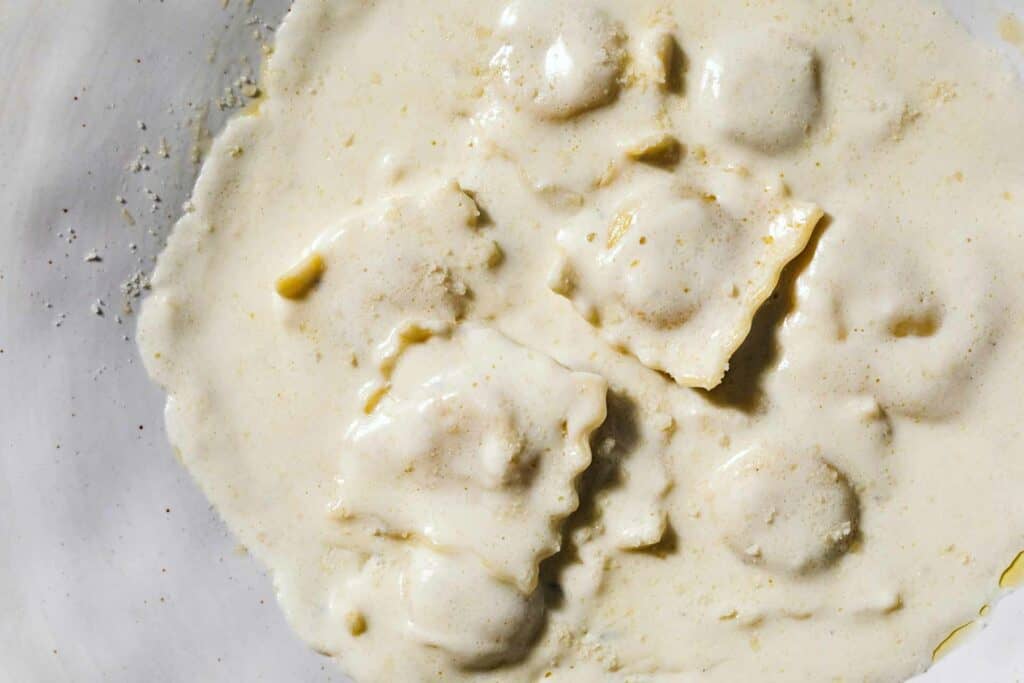Japanese cuisine has taken the world by storm with its delicate flavors, meticulous preparation, and unique ingredients. Among the myriad of ingredients used in Japanese cooking, two essentials stand out: mirin and rice vinegar. These traditional Japanese condiments play a vital role in enhancing flavors, adding depth to dishes, and achieving that signature umami taste.
In this comprehensive blog post, we will delve deep into the realm of mirin and rice vinegar, exploring their nuances and uncovering the key differences between them. Whether you’re a seasoned home cook or an adventurous food enthusiast, understanding the distinction between mirin and rice vinegar is crucial for mastering the art of Japanese cuisine.
Japanese cuisine, renowned for its precision and attention to detail, beautifully balances sweet, salty, sour, and umami flavors. Mirin and rice vinegar, although sharing some similarities, offer unique characteristics that contribute to the complexity of Japanese dishes.
Mirin, a golden-hued sweet rice wine, is a staple in Japanese cooking. Its origins can be traced back to ancient Japan, where it was initially used as a medicinal tonic. Today, mirin serves as a versatile ingredient, adding a gentle sweetness and depth of flavor to a wide range of dishes. From marinades and glazes to sauces and soups, mirin imparts a distinct umami taste that elevates the overall culinary experience.
Rice vinegar, on the other hand, is the result of fermenting rice wine, transforming it into a tangy and acidic condiment. With a history dating back thousands of years, rice vinegar has been a fundamental component of Japanese cuisine, particularly in pickling and sushi rice seasoning. Its delicate acidity and mild, clean flavor profile make it a versatile ingredient in dressings, sauces, and marinades.
Understanding Mirin
Before we dive into the differences between mirin and rice vinegar, it’s essential to develop a thorough understanding of mirin itself. Mirin, often referred to as “sweet rice wine,” is a key ingredient in Japanese cuisine, known for its unique flavor profile and versatility in cooking.
- Definition and Origin of MirinMirin is a traditional Japanese condiment made from fermenting glutinous rice, koji (a type of mold), and shochu (a distilled spirit). The fermentation process breaks down the starches in the rice, converting them into sugars, resulting in the characteristic sweetness of mirin.With a history dating back over 400 years, mirin originated as a medicinal tonic in Japan. Over time, it evolved into a popular cooking ingredient due to its ability to enhance flavors and add a subtle sweetness to various dishes.
- Traditional Production Process and IngredientsThe traditional production of mirin involves carefully selecting the rice, washing and steaming it, and allowing it to cool before mixing it with koji and shochu. This mixture is then left to ferment for an extended period, typically several months to several years.The quality of mirin greatly depends on the brewing technique, the ratio of rice to koji and shochu, and the fermentation duration. Traditional mirin, known as “hon-mirin,” undergoes a longer fermentation process and has a higher rice content, resulting in a richer and more complex flavor profile.
- Flavor Profile and AromaMirin boasts a delightful balance of sweetness, acidity, and umami, making it a prized ingredient in Japanese cuisine. Its flavor profile can be described as subtly sweet with a hint of tanginess and a mild alcoholic undertone. The aroma of mirin is delicate and slightly floral, enhancing the overall sensory experience of any dish it is used in.
- Different Types of MirinMirin comes in various forms, each with its own characteristics and uses. It’s important to understand the distinctions between these types:
- Hon-mirin: Considered the highest quality and most authentic mirin, hon-mirin has a higher rice content, a deeper color, and a more complex flavor. It contains a moderate alcohol content due to the fermentation process.
- Shio-mirin: Also known as “salted mirin,” shio-mirin is a milder and sweeter version that contains less alcohol. It often includes salt and has a shorter fermentation period.
- Shin-mirin: A modern variation of mirin, shin-mirin is a non-alcoholic alternative made by blending regular mirin with sweeteners, preservatives, and seasonings. It offers a convenient option for those who prefer not to consume alcohol.
Understanding the intricacies of mirin sets the stage for exploring its differences from rice vinegar. In the next sections, we will delve into the world of rice vinegar and compare its characteristics, applications, and uses to those of mirin. So, let’s continue our culinary exploration and unlock the secrets of rice vinegar.
Exploring Rice Vinegar
As we continue our journey into the realm of Japanese condiments, it’s time to turn our attention to rice vinegar. Like mirin, rice vinegar plays a vital role in Japanese cuisine, offering its unique acidity and delicate flavor that complements a wide range of dishes.

- Definition and History of Rice VinegarRice vinegar, often referred to as “rice wine vinegar,” is a vinegar made from fermented rice wine. It has been an integral part of Asian culinary traditions for centuries, with its origins tracing back to ancient China and Japan.The production of rice vinegar involves a two-step fermentation process. Firstly, rice is fermented into rice wine or sake, and then the sake undergoes a second fermentation process, transforming it into vinegar. This double fermentation process gives rice vinegar its distinctive tangy taste and mild acidity.
- Fermentation Process and Rice VarietyTo make rice vinegar, a specific strain of bacteria called Acetobacter is added to the sake, which converts the ethanol in the rice wine into acetic acid, the main component of vinegar. The type of rice used in the production of rice vinegar varies, with some varieties being more suitable for vinegar production due to their starch content and fermentation properties.The fermentation process can take several months or even years, depending on the desired acidity and flavor profile of the vinegar. The result is a vinegar with a delicate, clean flavor and a mild, slightly sweet undertone.
- Different Types of Rice VinegarRice vinegar comes in different varieties, each with its own characteristics and uses. It’s important to be familiar with these types:
- White Rice Vinegar: This is the most commonly used type of rice vinegar. It has a mild, slightly sweet flavor and is known for its clear, pale appearance. White rice vinegar is versatile and can be used for dressings, marinades, and dipping sauces.
- Red Rice Vinegar: Also known as “black rice vinegar,” this type of vinegar has a darker color and a stronger, more pronounced flavor compared to white rice vinegar. It is commonly used in Chinese cuisine and imparts a rich, tangy taste to dishes.
- Black Rice Vinegar: Black rice vinegar, originating from China, has a deep, dark color and a robust, smoky flavor. It is often used in stir-fries, braised dishes, and dipping sauces, adding a distinct tanginess and complexity.
- Comparison with Other Types of VinegarWhile rice vinegar is a staple in Asian cuisine, it’s worth noting how it compares to other popular types of vinegar:
- Apple Cider Vinegar: Apple cider vinegar, made from fermented apple juice, has a distinct fruity flavor and a slightly sweet taste. It is commonly used in Western cooking, particularly in salad dressings, marinades, and pickling.
- Balsamic Vinegar: Originating from Italy, balsamic vinegar is made from cooked grape must and aged in wooden barrels. It has a complex, sweet, and tangy flavor profile, often used in salad dressings, glazes, and desserts.
Differences in Usage and Culinary Applications
While both mirin and rice vinegar are essential ingredients in Japanese cuisine, they differ in terms of sweetness, acidity levels, and their specific role in culinary applications. Understanding these differences will allow you to harness the unique qualities of each condiment and elevate your dishes to new heights.
- Sweetness and Acidity LevelsMirin is known for its subtle sweetness, which adds depth and complexity to various dishes. Its sweetness comes from the natural sugars produced during the fermentation process of rice, koji, and shochu. The sweetness of mirin helps balance out the saltiness and umami flavors in Japanese cuisine, providing a harmonious taste experience.Rice vinegar, on the other hand, is characterized by its tanginess and mild acidity. The acetic acid produced during the fermentation process gives rice vinegar its distinct sour taste. The acidity of rice vinegar helps cut through richness and adds a refreshing element to dishes, making it a versatile ingredient in various culinary preparations.
- Mirin: A Flavor Enhancer and SeasoningMirin shines as a flavor enhancer and seasoning in Japanese cooking. Its delicate sweetness adds a subtle richness to sauces, marinades, dressings, and glazes. Mirin is often used to balance out savory flavors, bring out the umami taste, and impart a glossy finish to dishes.In teriyaki sauce, for example, mirin plays a crucial role in providing a sweet and savory glaze to grilled meats or vegetables. It also adds a lustrous sheen to dishes like glazed salmon or yakitori skewers. Mirin’s ability to enhance flavors and tenderize proteins makes it an indispensable ingredient in many traditional Japanese recipes.
- Rice Vinegar: The Versatile Culinary CompanionRice vinegar, with its tangy and mild acidity, offers a wide range of culinary applications beyond Japanese cuisine. Its versatility allows it to be used in various dishes, from pickling vegetables and making sushi rice to creating dressings, marinades, and dipping sauces.In sushi rice, rice vinegar is a key ingredient used to season the rice, giving it a tangy and slightly sweet flavor. The acidity of rice vinegar not only adds brightness to the rice but also helps to inhibit the growth of bacteria and preserve the quality of the sushi.Additionally, rice vinegar is commonly used in salad dressings, providing a light and refreshing taste. Its acidity cuts through the richness of ingredients like avocado or oily fish, creating a well-balanced flavor profile. Rice vinegar also complements stir-fries, adding a tangy kick to the dish and enhancing the overall taste experience.
- Highlighting Specific Dishes and RecipesUnderstanding the unique characteristics of mirin and rice vinegar allows for the creation of authentic Japanese dishes. Some notable dishes that showcase the distinct contributions of each condiment include:
- Teriyaki Chicken: Mirin is a key component of the teriyaki sauce, lending its sweetness and glaze to the succulent grilled chicken.
- Sunomono: A refreshing Japanese cucumber salad, sunomono relies on the tanginess of rice vinegar to bring out the crispness of the cucumbers and balance the flavors.
- Sushi Rice: Rice vinegar is an essential ingredient in seasoning sushi rice, giving it the characteristic tangy taste that pairs perfectly with fresh seafood.
Substitutes and Tips for Cooking with Mirin and Rice Vinegar
While mirin and rice vinegar are essential ingredients in Japanese cuisine, there may be instances when you need to find substitutes or alternatives due to availability or dietary restrictions. Additionally, understanding the proper usage and storage of these condiments is crucial for maximizing their flavors in your cooking endeavors. Let’s explore some substitutes and tips for working with mirin and rice vinegar.
- Mirin SubstitutesIf you find yourself without mirin, there are a few alternatives that can mimic its flavor and sweetness:
- Sweet Sake or Sherry: Sweet sake or sherry can be used as a substitute for mirin. While they may not have the exact flavor profile, they provide a similar sweetness and depth to dishes.
- White Wine or Dry Vermouth: White wine or dry vermouth can be used as a mirin substitute in savory recipes. Keep in mind that these options may lack the sweetness of mirin, so you may need to adjust the sugar content accordingly.
- Rice Vinegar AlternativesIf you don’t have rice vinegar on hand, you can use these alternatives without compromising too much on flavor:
- White Wine Vinegar: White wine vinegar is an excellent substitute for rice vinegar in most recipes. Its mild acidity and clean flavor make it a versatile choice.
- Apple Cider Vinegar: If you prefer a slightly fruity and tangy flavor, apple cider vinegar can be used as a substitute for rice vinegar. However, note that its flavor may be more pronounced, so adjust the quantity accordingly.
- Tips for Cooking with Mirin and Rice VinegarTo make the most of mirin and rice vinegar in your cooking, consider the following tips:
- Balance the Sweetness: When using mirin, be mindful of the sweetness in your dish. While it adds depth, too much mirin can overpower other flavors. Taste as you go and adjust accordingly.
- Use Rice Vinegar Sparingly: Rice vinegar has a tangy flavor, so start with a small amount and gradually add more if needed. Remember, it’s easier to add more vinegar than to dilute its acidity once it’s incorporated into a dish.
- Store Properly: Both mirin and rice vinegar should be stored in a cool, dark place, away from direct sunlight and heat. This helps maintain their flavors and prolong their shelf life.
- Experiment with Ratios: Don’t be afraid to experiment with the ratios of mirin and rice vinegar in your recipes. Depending on your personal preference, you can adjust the amounts to achieve the desired level of sweetness or tanginess.
Final Thoughts
Throughout this comprehensive exploration of mirin and rice vinegar, we have unraveled the distinctions between these two essential ingredients in Japanese cuisine. From their production processes to their flavor profiles and culinary applications, mirin and rice vinegar each bring unique qualities to the table.
Mirin, with its delicate sweetness and umami undertones, serves as a flavor enhancer and seasoning in Japanese cooking. Its ability to balance flavors and add depth to dishes makes it a prized ingredient in marinades, glazes, sauces, and more. On the other hand, rice vinegar, with its tangy and mild acidity, offers versatility in various culinary preparations, from sushi rice seasoning to dressings, pickling, and dipping sauces.
Understanding the differences between mirin and rice vinegar allows you to fully appreciate the complexities of Japanese flavors and incorporate them authentically into your cooking. Whether you’re creating traditional Japanese dishes or experimenting with fusion cuisine, these condiments play a crucial role in achieving the desired taste profiles.
As you explore the world of mirin and rice vinegar, remember to experiment, taste, and adjust according to your personal preferences. The beauty of cooking lies in the ability to adapt and innovate while respecting the traditions and foundations of the cuisine.
So, armed with the knowledge of mirin and rice vinegar, embark on your culinary adventures, infusing your dishes with the authentic flavors of Japan. Whether you’re mastering the art of sushi, indulging in savory teriyaki delights, or creating your own unique creations, mirin and rice vinegar will be your trusted companions.
In conclusion, mirin and rice vinegar may share similarities in their origins and usage in Japanese cuisine, but their distinct characteristics make them indispensable in their own right. Embrace the subtle sweetness of mirin and the tangy acidity of rice vinegar, and let them transport you to the vibrant world of Japanese flavors.
Now, armed with this comprehensive understanding of mirin and rice vinegar, go forth and create delectable dishes that showcase the essence of Japanese cuisine. Happy cooking!





